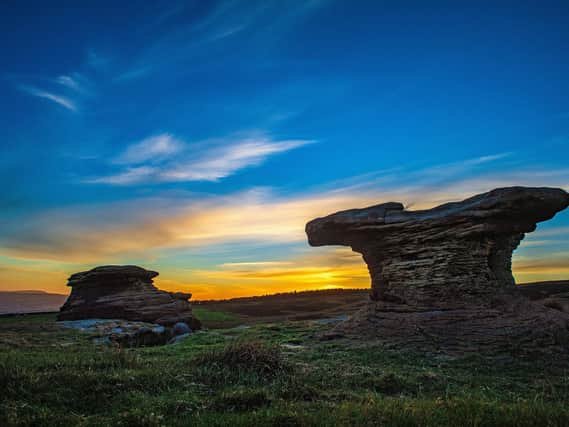The prehistoric rocks on Rombalds Moor of national significance


Situated between the valleys of the Wharfe and the Aire, Rombalds Moor, which includes the infamous Iklely Moor, features more than 400 known rock carvings, as well as burial monuments, stone circles and a range of enclosed settlements.
According to the public body Historic England, prehistoric rock carving is found across several parts of upland Britain, on boulders and outcrops scattered among the moorland. One of the densest concentrations is on Rombalds Moor.
Advertisement
Hide AdAdvertisement
Hide Ad“The most common form of decoration is the `cup and ring’ mark,” it explains. “Expanses of small cup-like hollows, which may be surrounded by one or more `rings’, are pecked into the surface of the rock. Other shapes and patterns, including some dominated by grooves or lines, are also known.”
It is thought the carvings date back to between 2800 and 500 BC, the Late Neolithic and Bronze Age periods. Little is known about the meaning of the designs, though they have been interpreted in many cases as sacred or religious symbols and are said to offer an insight into prehistoric art.
The rocks pictured here, on the moorland above Silsden, are listed as a scheduled monument by the body, meaning they are considered to be of national importance. The eroded pillars are known as the Doubler Stones.
One of the rocks has a large number of cups, as well as grooves and deep basins. The other has two larger cups. Their strange mushroom shape is said to be due to the fact that the top part of the pillar is a harder stone whilst the lower part is an easily eroded stone.
Advertisement
Hide AdAdvertisement
Hide AdOf course, the rocks are not the only impressive historic formation to be situated on the moorland, the most famous perhaps being the Cow and Calf Rocks at Ilkley.
For more stories from the YP Magazine and The Yorkshire Post features team, visit our Facebook page.
Editor’s note: first and foremost - and rarely have I written down these words with more sincerity - I hope this finds you well.
Almost certainly you are here because you value the quality and the integrity of the journalism produced by The Yorkshire Post’s journalists - almost all of which live alongside you in Yorkshire, spending the wages they earn with Yorkshire businesses - who last year took this title to the industry watchdog’s Most Trusted Newspaper in Britain accolade.
Advertisement
Hide AdAdvertisement
Hide AdAnd that is why I must make an urgent request of you: as advertising revenue declines, your support becomes evermore crucial to the maintenance of the journalistic standards expected of The Yorkshire Post. If you can, safely, please buy a paper or take up a subscription. We want to continue to make you proud of Yorkshire’s National Newspaper but we are going to need your help.
Postal subscription copies can be ordered by calling 0330 4030066 or by emailing [email protected]. Vouchers, to be exchanged at retail sales outlets - our newsagents need you, too - can be subscribed to by contacting subscriptions on 0330 1235950 or by visiting www.localsubsplus.co.uk where you should select The Yorkshire Post from the list of titles available.
If you want to help right now, download our tablet app from the App / Play Stores. Every contribution you make helps to provide this county with the best regional journalism in the country.
Sincerely. Thank you.
James Mitchinson